Research result 
해외 논문
-
Blind 3D mesh watermarking based on cropping-resilient synchronization
This paper proposes a novel anti-cropping blind 3D mesh watermarking method. Although there have been many mesh watermarking studies, methods with robustness to cropping attack are rare. Existing anti-cropping watermarking methods show only slight robustness to cropping and signal processing attack. Cropping is one of the most severe attack, since it significantly undermines the synchronization of watermarking. In this paper, we solve the synchronization problem in a blind environment which is a core part of the anti-cropping watermarking method using local shape-based synchronization. The proposed local shape-based synchronization is robust to not only cropping attack, but also similarity and distortion attack, since it uses the shape information of the mesh, not the surface information. In the watermark embedding process, the distortion from the watermark was minimized by using the method of spreading based on segmented bin. Additionally, the method has higher security than the existing method. In the experimental results, the proposed method shows high robustness against common signal processing attacks as well as severe cropping attacks with high invisibility.
 2023-08-09 17:33
2023-08-09 17:33
-
DeepPore: Fingerprint Pore Extraction Using Deep Convolutional Neural Networks
As technological developments have enabled high-quality fingerprint scanning, sweat pores, one of the Level 3 features of fingerprints, have been successfully used in automatic fingerprint recognition systems (AFRS). Since the pore extraction process is a critical step for AFRS, high accuracy is required. However, it is difficult to extract the pore correctly because the pore shape depends on the person, region, and pore type. To solve the problem, we have presented a pore extraction method using deep convolutional neural networks and pore intensity refinement. The deep networks are used to detect pores in detail using a large area of a fingerprint image. We then refine the pore information by finding local maxima to identify pores with different intensities in the fingerprint image. The experimental results show that our pore extraction method performs better than the state-of-the-art methods.
 2023-08-09 17:33
2023-08-09 17:33
-
Median Filtered Image Restoration and Anti-Forensics Using Adversarial Networks
Median filtering is used as an anti-forensic technique to erase processing history of some image manipulations such as JPEG, resampling, etc. Thus, various detectors have been proposed to detect median filtered images. To counter these techniques, several anti-forensic methods have been devised as well. However, restoring the median filtered image is a typical ill-posed problem, and thus it is still difficult to reconstruct the image visually close to the original image. Also, it is further hard to make the restored image have the statistical characteristic of the raw image for the anti-forensic purpose. To solve this problem, we present a median filtering anti-forensic method based on deep convolutional neural networks, which can effectively remove traces from median filtered images. We adopt the framework of generative adversarial networks to generate images that follow the underlying statistics of unaltered images, significantly enhancing forensic undetectability. Through extensive experiments, we demonstrate that our method successfully deceives the existing median filtering forensic techniques.
 2023-08-09 17:33
2023-08-09 17:33
-
Cropping-resilient 3D mesh watermarking based on consistent segmentation and mesh steganalysis
This paper presents a new approach to 3D mesh watermarking using consistent segmentation and mesh steganalysis. The method is blind, statistical, and highly robust to cropping attack. The primary watermarking domain is calculated by shape diameter function and the outliers of segments are eliminated by computing the consistency interval of vertex norms. In the watermark embedding process, the mesh is divided into several segments and the same watermark is inserted in each segment. In the watermark extraction process, the final watermark among watermark candidates extracted from multiple segments is determined through watermark trace analysis that is kind of mesh steganalysis. We analyze the watermark trace energy of multiple segments of a mesh and detect the final watermark in the segment with the highest watermark trace energy. To analyze the watermark trace energy, we employ nonlinear least-squares fitting. The experimental results show that the proposed method not only achieves significantly high robustness against cropping attack, but also resists common signal processing attacks such as additive noise, quantization, smoothing and simplification.
 2023-08-09 17:32
2023-08-09 17:32
-
Robust Template-Based Watermarking for DIBR 3D Images
Several depth image-based rendering (DIBR) watermarking methods have been proposed, but they have various drawbacks, such as non-blindness, low imperceptibility and vulnerability to signal or geometric distortion. This paper proposes a template-based DIBR watermarking method that overcomes the drawbacks of previous methods. The proposed method exploits two properties to resist DIBR attacks: the pixel is only moved horizontally by DIBR, and the smaller block is not distorted by DIBR. The one-dimensional (1D) discrete cosine transform (DCT) and curvelet domains are adopted to utilize these two properties. A template is inserted in the curvelet domain to restore the synchronization error caused by geometric distortion. A watermark is inserted in the 1D DCT domain to insert and detect a message from the DIBR image. Experimental results of the proposed method show high imperceptibility and robustness to various attacks, such as signal and geometric distortions. The proposed method is also robust to DIBR distortion and DIBR configuration adjustment, such as depth image preprocessing and baseline distance adjustment.
 2023-08-09 17:32
2023-08-09 17:32
-
Finding robust domain from attacks: A learning framework for blind watermarking
In recent years, some researchers have been interested in whether robustness and blindness can be simultaneously secured in a watermarking based on machine learning. However, achieving robustness against various attacks at once is still difficult for watermarking techniques. To address the problem, in this paper, we propose a learning framework for robust and blind watermarking based on reinforcement learning. We repeat three stages: watermark embedding, attack simulation, and weight updating. Specifically, we present image watermarking networks called WMNet using convolutional neural networks (CNNs). Two methods to embed a watermark are proposed and these two methods are based on backpropagation and autoencoder, respectively. We can optimize the robustness while carefully considering the invisibility of the watermarking system. The experimental results show that the trained WMNet captures more robust features than the current watermarking schemes, which use the frequency domain. The trade-off between the robustness and the invisibility of each technique was measured. Also, we adopt a visual masking with which we can achieve the appropriate balance between robustness and invisibility of the watermark. Our reinforcement-learning-based technique has better robustness than the existing techniques for both attacks seen in learning and unseen attacks. Due to the generalization ability of WMNet, moreover, it shows high robustness against multiple attacks and various levels of attacks which are not considered in training stage. (C) 2019 Elsevier B.V. All rights reserved.
 2023-08-09 17:32
2023-08-09 17:32
-
Local-Source Enhanced Residual Network for Steganalysis of Digital Images
Steganalysis refers to the study of identifying hidden messages in images inserted by steganography. Although detection performance is greatly improved when adopting convolutional neural networks (CNNs), they require sophisticated tricks, such as preprocessing for suppression of image content, using absolute and truncated activation functions, and utilizing domain knowledge. These tricks help networks train stably and mitigate the convergence problem of early stages in training, but they also restrict the flexibility of CNNs, which limits their performance. In this paper, we propose a local-source enhanced residual network (LSER) with end-to-end learning. The LSER is simple in its architecture but has two distinct characteristics from previous methods. First, the LSER uses residual blocks without any normalization. We find batch normalization is an unnecessary module in our framework. Second, a local-source skip connection is added to bypass features of different levels, which allows more abundant feature representation. Moreover, the LSER exhibits state-of-the-art results compared with the existing work in both spatial and JPEG domain steganalysis. Furthermore, a simple self-ensemble method further improves its performance without any side information.
 2023-08-09 17:32
2023-08-09 17:32
-
Exposing Digital Image Forgeries by Detecting Contextual Abnormality Using Convolutional Neural Networks
Traditionally, digital image forensics mainly focused on the low-level features of an image, such as edges and texture, because these features include traces of the image's modification history. However, previous methods that employed low-level features are highly vulnerable, even to frequently used image processing techniques such as JPEG and resizing, because these techniques add noise to the low-level features. In this paper, we propose a framework that uses deep neural networks to detect image manipulation based on contextual abnormality. The proposed method first detects the class and location of objects using a well-known object detector such as a region-based convolutional neural network (R-CNN) and evaluates the contextual scores according to the combination of objects, the spatial context of objects and the position of objects. Thus, the proposed forensics can detect image forgery based on contextual abnormality as long as the object can be identified even if noise is applied to the image, contrary to methods that employ low-level features, which are vulnerable to noise. Our experiments showed that our method is able to effectively detect contextual abnormality in an image.
 2023-08-09 17:31
2023-08-09 17:31
Research
우리 연구실의 연구정보를 안내합니다.
자세히 보기







